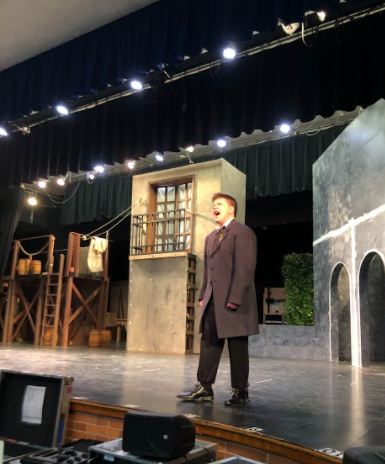I am going to be honest – I was not immediately drawn into All the Light We Cannot See like a moth to flame. It was most definitely not an instant page turner and I often contemplated abandoning this book entirely in the first few chapters. But, I kept reading as I read the reviews, and let me say – I am glad I stuck with it.
But this book is solely built on imagery. In the literal sense of 1940s France/Germany, but also the metaphorical sense. Analogies of light, to see and not to see, and the importance of that balance. It is a mind boggling stroke of genius, but it tends to get dense and suffocating at points.
However, once we get into the thick of this World War II plot, we also learn about the destruction and dehumanization of war. It’s about Parisian Marie-Laure, a young and naive girl who has been blind since she was six, and German orphan Werner who finds himself rising through the ranks of the Hitler Youth due to his aptitude to technology. Both stories are told with empathy and care, as each child is forced down a path by their personal circumstances and by the destructive monster that is war.
Marie-Laure and her father are forced to flee Paris as Germany takes control and they take solace in Saint-Malo on the coast of France. Unbeknownst to Marie, her father carries one of the most sought after jewels in Europe; the Sea of Flames. Daniel Laure, previously being a locksmith in the Museum of Natural History in France, is given this jewel once Germany occupied France. Four copies of this jewel were made in order to confuse thieves, each given to a worker of the museum. No one knows which one is real. As Marie and Daniel flee to their Uncle Etienne’s home in Saint-Malo, Marie discovers the high power radio transmitter in his basement. Marie and Etienne broadcast codes and messages in order to thwart the German war effort.
Meanwhile, Werner is sent to the front lines at sixteen to track down illegal radios, but is then sent to Saint-Malo, where he is astonished to hear the voice of the man that spoke on the broadcasts he listened to as a child. As Germany begins to bomb Saint-Malo, circumstances bring Werner and Marie together.
The time the two spend together is short, and is not even romantic, which I enjoyed. This story in general is meant to shed a light on the invisible interweaving paths of our lives and how they continue to cross with one another. These two lives that are so juxtaposed somehow connect.
One thing; as much as I love historical fiction, WWII based stories are often hit or miss. The Tattooist of Auschwitz is a hit, and so is The Book Thief, because the destruction and violence of the Nazi Party was meant to be uncomfortable. In this instance, Werner is pushed into Hitler Youth, does not agree with his orders, and is not violent, but he is struggling morally. The style in which Doerr writes about the Third Reich is very poetic and metaphorical, which would be wonderful in any other circumstance. The violence, destruction and murder done at the hands of the Nazi Party, in my opinion, should not be turned into metaphors or aestheticized.
Flaws aside, All the Light We Cannot See was a truly eye-opening and haunting story of fate and circumstance. In the end, what this novel illustrates is the fluidity of human life, moral uncertainty, and the miraculous impact small events can have on your life and the lives of others.
All the Light We Cannot See by Anthony Doerr is a captivating and lingering piece of fiction
November 17, 2020
0
More to Discover
About the Contributor

Charlotte Gumpel, Editor-in-Chief
Charlotte is an Editor-in-Chief at The Fanscotian and a senior at SPFHS. Charlotte enjoys cooking and playing with her dogs. She loves to read and write (check out her book reviews on thefanscotian.com!) Her favorite genres are historical and science fiction.








